SUMMARY
This is AI generated summarization, which may have errors. For context, always refer to the full article.
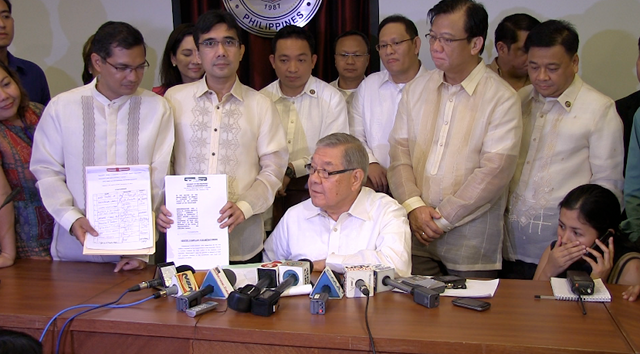
MANILA, Philippines – If the prosecution seemed unprepared for the impeachment trial of Chief Justice Renato Corona, it’s because, in reality, it was.
The House of Representatives impeached Corona on Dec. 12, 2011. The trial started a month later, Jan. 16, 2012.
Only a core group of at least 5 lawmakers drafted the impeachment complaint that was signed in a matter of hours on Dec. 12, 2011. When the House completed its panel of prosecutors and recruited private lawyers to assist them, it was already the Christmas and New Year holidays.
A lot of things still needed to be done, such as obtaining documents and iniviting witnesses. But government offices were closed for the break and potential witnesses were on vacation.
Then Jan. 16, 2012 came. Prosecutors walked into the impeachment court for the historic trial of the first Chief Justice to be impeached.
The saying that haste makes waste must not have been lost on them.
PNoy’s desire
The plan to finally impeach the Chief Justice was hatched shortly after the Nov 15, 2011 TRO issued by the Supreme Court that would have allowed Mrs Arroyo to seek treatment abroad. The government defied the TRO, afterwhich President Aquino’s allies began setting the stage for a Corona impeachment.
In a crucial Nov. 26, 2011 meeting in Malacañang that lasted till the wee hours of the morning, the President listened to both sides of the debate: whether the government should continue defying the Court or find a middleground.
A week after that, the President made clear what he wanted: he attacked Corona in two speeches – one before the elite Makati Business Club and another before lawyers and justices, including Corona himself – and sent a clear signal to his political lieutenants to start the groundwork for impeachment.
“I remember being asked early December by Akbayan, our Bantay Gloria ally, if Black and White (BnW) would support the impeachment [of Corona]. Of course, I said,” BnW convenor Leah Navarro told Rappler.
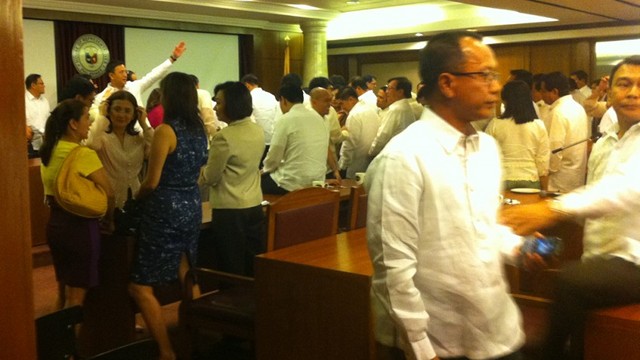
When House Speaker Feliciano Belmonte called for an emergency caucus on December 12, the Corona impeachment became an open secret. In the morning, a draft complaint naming as private complainants former Akbayan Rep. Risa Hontiveros, Navarro, whistleblower Rodolfo “Jun” Lozada Jr. and student leader Juan Carlo Tejano circulated in the media.
What took many by surprise was that the House was able to impeach the Chief Justice on the same day. From a tactical point of view, it was a master stroke. The SC en banc was scheduled to meet the following day, Dec. 13, 2011, and who knows what they would have decided on in relation to the Arroyo case?
“We were at the Batasan on the 12th. What I remember is that individual parties and party list groups had private caucuses hours before the [2 p.m.] majority caucus. Risa [Hontiveros-Baraquel of Akbayan] and I were there in the event that they weren’t going to get the numbers. But they did,” recalled Navarro.
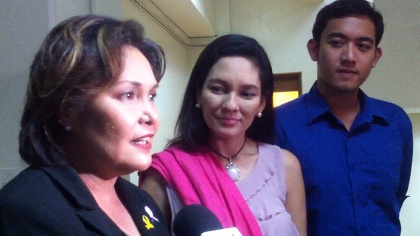
House majority floor leader Neptali Gonzales II explained that they didn’t want to give the SC opportunity to intervene.
Gonzales recalled how the SC issued a restraining order on the House impeachment proceedings against former Ombudsman Merceditas Gutierrez. It stalled the House for about 5 months before they finally impeached Gutierrez.
Critics of President Aquino also point to the Nov. 22, 2011 SC ruling on the immediate distribution to farmers of of Hacienda Luisita, a 4,900-hectare agricultural estate owned by the President’s family.
By the end of the day, a total of 188 lawmakers lined up inside the Rolando Andaya Hall to sign as direct complainants.
The 1987 Constitution provides for this fast-tracked mode. With more than the necessary 1/3 vote of 95, the verified impeachment complaint automatically became the Articles of Impeachment that was transmitted to the Senate the following day. (More lawmakers wanted to include their signatures, but the complaint had already been transmitted.)
Choosing this fast route and skipping the committee meant that solons – outside the core group – had no chance to review or amend the complaint.
Ilocos Norte Rep. Rodolfo Fariñas is probably the most vocal critic of the Supreme Court (SC) in the House of Representatives. Yet he did not sign the complaint because—as he would explain before the impeachment court—he found it poorly crafted. He said he agreed to become a prosecutor because he believes in the “cause of action.”
The House panel
How were the 11 public prosecutors chosen?
Belmonte said it wasn’t a difficult process. He said they chose the lawmakers who “worked hard” on the impeachment complaint. Many of them were the same prosecutors assigned to the aborted impeachment trial of resigned Ombudsman Gutierrez.
The prosecution panel fairly represents political interests as well. They are the members of the House majority coalition, which worked together to get the 188 votes.
Leading the team are LP members: Rep Niel Tupas Jr as lead prosecutor, Cavite Rep. Emilio “Jun” Abaya as impeachment manager, Oriental Mindoro Rep. Reynaldo Umali, and Northern Samar Rep. Raul Daza.
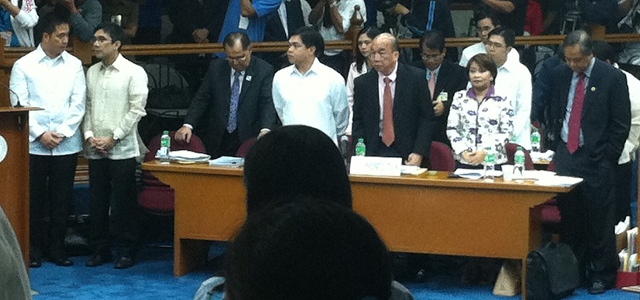
The coalition allies are represented: Fariñas of the Nacionalista Party, Giorgidi Aggabao and Marly Agabas of the Nationalist People’s Coalition, and Elpidio Barzga of the National Unity Party, a breakaway from the erstwhile ruling party Lakas-NUCD.
The party list groups are also represented: Akbayan Rep. Arlene “Kaka” Bag-ao, Bayan Muna Rep. Neri Colmenares, and Cibac party list Rep. Sherwin Tugna.
Completing the team are spokespersons Marikina Rep. Romero Quimbo, Deputy Speaker and Quezon Rep. Lorenzo Tañada III, and Aurora Rep. Juan Edgardo Angara.
Both Tañada and Angara were initially chosen to be prosecutors; they were named spokespersons instead. For Angara, this was to avoid a conflict-of-interest situation because his father, Sen Edgardo Angara, is a judge in the impeachment court. Tañada said the team asked him to become spokesperson instead. He is, after all, the spokesperson of the ruling Liberal Party.
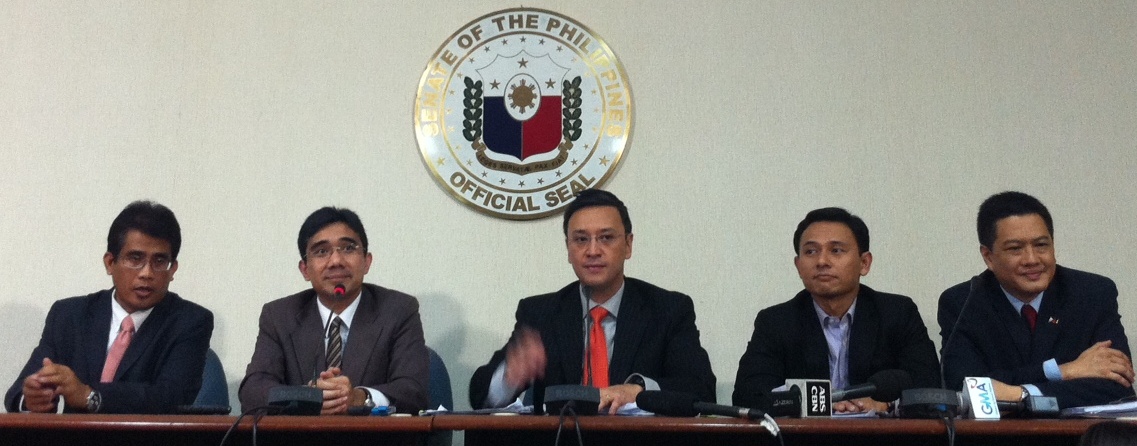
Recruiting Ayo Bautista
At least 58 private lawyers are helping the House panel.
It may appear now that many lawyers had wanted to help, but this was not the case in the early phase. The stakes are high. The respondent is the Chief Justice. What lawyer in his right mind would want to antagonize the Chief Justice? And what would happen to their careers and cases if Corona is acquitted?
Thanks largely to Quimbo’s help, the prosecution panel got lawyer Mario Bautista of Poblador Bautista & Reyes as lead private prosecutor. “He was hesitant at first. He took it because he believed in it,” said Quimbo, who was a junior associate of the law firm before he entered politics.
Tupas got Bautista to officially agree before the Christmas break. Additional pressure from Belmonte helped. Belmonte and Bautista worked together in the Estrada trial. (Before he joined the team of private prosecutors, Bautista was corporate counsel of ABS-CBN.)

Bautista made a comeback as private prosecutor. He was the private prosecutor who presented banker and key witness Clarissa Ocampo, who testified that she personally saw former President Joseph Estrada sign a check as “Jose Velarde.” Her testimony – and the 2nd envelope that wasn’t opened – led to the People Power revolt that ousted Estrada. A young lawyer then, Quimbo was among those who assisted Bautista.
According to Quimbo, Bautista was first approached by Corona defense counsel Eduardo Delos Angeles to join their team. Delos Angeles supposedly offered him to become “co-lead counsel.”
Soon enough, more private lawyers agreed to help. The congressmen themselves brought in their recruits to assist them in their respective assignments.
Prosecution workflow
The prosecution panel chose to start with Article 2, the failure of the Chief Justice to accurately declare his Statement of Assets, Liabilities, and Net Worth (SALN). The prosecution now declares it as its strongest case against Corona, although it was hardly a favorite in the beginning.
Article 2 was originally the assignment of Tañada. Agabas replaced him when Tañada chose to become spokesperson.
“That was my initial choice,” Tañada said. “It appears to be the strongest. Before nobody wanted to say that Article 2 was strong. It was not really what people chose and I wound up being the one [getting the assignment originally]…”
Barzaga said they chose to start with Article 2 because Corona’s properties were already being discussed in the media. On January 16, shortly before the start of Day 1 of the impeachment trial, Corona delivered a speech denying the 45 properties earlier claimed by the prosecution panel.
“The public has been talking about it. We wanted to address that immediately,” said Barzaga. Barzaga assisted Agabas, who was the lead prosecutor for Article 2.
Here’s how the prosecution panel works.
The lawmakers were assigned to lead one of the 8 articles of impeachment and to assist in another article. The 8 sub-groups are independent of each other and assigned separate sets of private prosecutors to help them.
Except in meetings where overall strategy is discussed, the subgroups hold their own meetings and are sometimes oblivious to the day’s trial.
As lead prosecutor, Tupas is a member of all sub-groups. In meetings, he oversees the overall strategy. On the floor when trial is ongoing, he generally makes the calls.
As lead private prosecutor, the private prosecutor Bautista reviews and comments on legal briefs and also overall strategy. He likes to keep a low-profile and shuns interviews. On the floor, he takes the back seat, quietly writing notes.
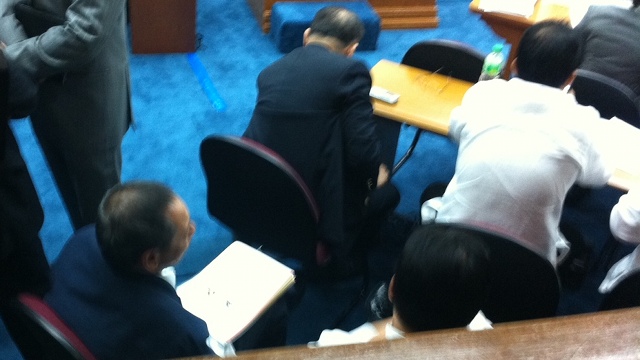
Bautista’s role is very important, said Rep. Colmenares.
“He has experience with the first impeachment complaint. He also has experience in whipping a law firm. We are a heterogeneous lot, the lawyers and the congressmen. One district congressman does not necessarily have relations with another district congressman,” he said.
But it is not always a smooth relationship, especially in the beginning. Congressmen are, well, congressmen. Put 11 of them in one room and you can expect them to out-talk each other.
Bautista is not known to be very assertive.
“But it is much better now,” said one member of the dynamics between the public prosecutors and the private lawyers. On the floor lately, congressmen are always seen chatting with Bautista or other private lawyers during breaks.
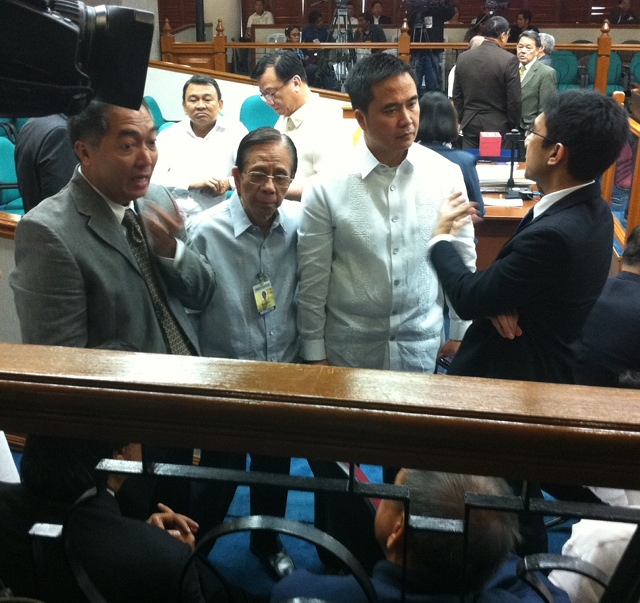
Weak commander
It doesn’t help that the House panel is a team of mostly young congressmen with limited litigation experience before they entered politics.
Tupas, 41, and his team are hardly a match to the House panel that prosecuted Estrada, which included Belmonte himself and now senator-juror Joker Arroyo.
As one lawyer puts it, “Tupas is definitely no Sonny Belmonte.”
Belmonte and Arroyo were 64 and 73, respectively, during the Estrada trial. They had the experience and the gravitas, as lawyers like to call it, that commanded the senators’ respect.
Belmonte dismissed it as an issue shortly before the trial started on January 16. “I’m very confident that the lack of experience and hours in the courtroom can be compensated for by their independent thinking, by their gung-ho attitude, and also by the fact they have been studying the case.”
Unfortunately, it’s not been the case.
The prosecutors have suffered a beating – inside and outside the court – for their apparent inexperience.
To think that despite his stature, Belmonte himself found his experience in the Estrada trial unpleasant. “I don’t feel nostalgic. It was not a pleasant experience at all. We are called upon to be on our toes all the time, and to expect the unexpected. And to really do your best,” he said in the same January 16 interview when asked about the Estrada trial.
Tupas earned his law degree from the University of the Philippines College of Law but he only got to practice for 5 years.
Formerly a quiet congressman, his loyalty to LP paid off when he was named chairman of the House committee on justice. As chairman, Tupas steered the committee on justice to impeach former Ombudsman Merceditas Gutierrez, who would resign before her trial.
Recently, the committee also approved an impeachment complaint against SC Associate Justice Mariano Del Castillo. It is awaiting plenary action.

Strict court
The impeachment complaint put the prosecution panel in a lot of trouble before the court. Presiding Officer and Senate President Juan Ponce Enrile has prevented presentation of evidence for charges that are not specified in the title of the article–even if it is in the body of the complaint.
Ernile gave the prosecutors a tongue-lashing over this. “I already told you that this is the trouble with your articles of impeachment. You are not very careful in allegations and you want to expand (charges) in the course of trial! I have warned you several times,” a fuming Enrile said when he barred the testimony of a Philippine Airlines executive on the flight perks that Corona received from the company.
“For heavens’s sake, this is not a technicality! We are already very, very liberal so as not to embarrass you,” Enrile added when lead prosecutor Tupas tried to appeal the ruling.
The prosecutors ended up dropping other charges in Article 3.
Despite Enrile’s declarations of liberality, lawyers interviewed by Rappler observed that the impeachment court under Enrile is a little too strict. To former Chief Justice Artemio Panganiban, for instance, the body of the complaint takes precedence even if there’s discrepancy between the title and the body of the complaint.
The court has proven to be stricter than the court that tried Estrada in 2000.
During the Estrada impeachment trial, private prosecutors were allowed to engage senators. The defense and prosecution panels were also allowed to object and appeal decisions by the court. Ironically, the presiding officer of the more relaxed Estrada impeachment trial was a Chief Justice, particularly Chief Justice Hilario Davide.
Even defense counsel Serafin Cuevas had once complained on the strictness of the impeachment court. He called for the amendment of Senate rules that disallow the defense and the prosecution panel to debate with senators or at least object their questions to witneses. In a motion before the SC to stop the impeachment proceedings, Corona complained about 6 “biased” senator-jurors who had been supposedly helping the prosecution.
On Tuesday, February 28, the prosecutors finally rested their case, hoping that despite their rush to impeach a chief justice, they could still convict him. – Rappler.com
Add a comment
How does this make you feel?
There are no comments yet. Add your comment to start the conversation.